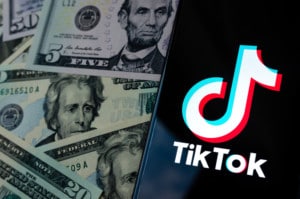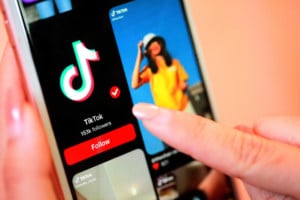
Omnichannel eCommerce has gained widespread recognition and adoption in recent years as brands look to offer customers a unified experience. As these capabilities progress, content creation has emerged as a pressing concern for many brands — especially with the development of new digital platforms like TikTok — so altering your content strategy to meet audiences where they are is crucial for a valuable marketing campaign.
So how can you develop creative content for various digital mediums?
Traditional content forms are designed to build brand equity using a comprehensive storyline or campaign. While typically long-form content, these productions can be deconstructed into shorter segments of the same concept and launched onto a single platform. Conversely, digital-first creative content extends beyond a brand equity approach and encompasses multiple channels to optimize the marketing funnel. This performance-driven method employs diverse content and advertising forms to focus on value proposition rather than brand equity.
What should you consider when optimizing content for digital platforms?
When developing an omnichannel creative strategy, you must align your advertising and marketing priorities with your selected channels. Lindsay Kean, Blue Wheel’s Senior Director of Creative Services, explains that a holistic omnichannel approach requires “looking at all of the different channels, their hierarchy of needs, and then being able to take those needs and put them into a full-funnel approach of what type of content, what part of the funnel, and what different channels are a priority.” It’s crucial to ascertain the ideal content for each platform. For instance, photography GIFS and short-form video content perform positively on TikTok. Soundless videos are best utilized on Meta, whereas platforms like YouTube are sound-dependent. Product-specific advertising can be executed on Amazon through lifestyle photography and holiday content promotions. No matter your content creation strategy or the platforms you leverage, each campaign must provide value to reach a diverse audience sifting through endless feeds of related content.
Optimizing Digital Content by Tapping Into Full Funnel Marketing
The marketing funnel is fundamental to driving engagement and conversions, and curating content for various stages of each digital platform’s funnel enhances your advertising efforts. Generally, the customer journey has three phases: awareness, consideration, and conversion. Product introduction and walk-through videos, UGC content, and brand anthems promote awareness by informing consumers of your brand. As customers consider your products, you can employ problem and solution approaches through unboxing videos demonstrating how the product solves a foundational issue. Promotional messaging, such as call-to-actions, encourage click-throughs and drive conversions.
Creative content often holds a high production value, so some brands are hesitant to transition to digital. But excess content from traditional campaigns can be recycled and employed in digital mediums. Instead of recreating content, you can combine assets, including previous photo and video shoots and UGC influencer content, to convey a cohesive story that aligns with brand goals and emphasizes digital-first.
An alternative strategy involves repurposing conventional social media ads to obtain a greater Thumbstopping rate, which measures audience engagement. Standard video ads are often lengthy, lack hooks, and have limited on-screen text, diminishing performance. An effective Thumbstopping video is five seconds and relays a captivating brand story that captures audiences’ attention within the first three seconds.
Reusing creative content requires careful consideration of digital engagement techniques and marketing funnel and channel goals.
Since digital creative emphasizes performance-based metrics, understanding precise measurements and experimentation methods is crucial to success. Many of the same metrics utilized in traditional campaigns apply to digital creative, including KPIs, ROAS, and CPA (cost per acquisition), but differ based on funnel and channel objectives. Digital campaigns should also incorporate granular measurements to assess the rationale behind performance ratios. This may involve evaluating likes, follows, shares, and comments for organic social, helping you understand customer value and plan for future campaigns.
Testing is a key component of the creative planning stage and can be executed in two approaches: iterative and phase testing. Brands with a large monthly ad spend can produce multiple content iterations and compare them against each other to assess their performance. For instance, you can employ various personas within the same ad to determine audience interpretations. Additionally, developing different versions of Thumbstopping videos allows you to evaluate metrics on each one and adjust your approach based on the data. Phase testing is useful for brands with a lower monthly spend and entails releasing content following production, gauging its effectiveness, and tweaking or repurposing it according to the results.
Planning is especially effective when involving the entire organization. This ensures all digital assets are arranged and in alignment with business goals. Blue Wheel’s VP of Sales and Marketing, Nicole Reich, stresses the importance of company-wide participation, “So I have found in some companies that the more you pull in other teams early on to plan, the better… But then also having someone take the lead and saying, ‘I’m accountable for knowing that we have all the resources, the assets that we need, and I know who to go to understand their wishlist.’”
To capitalize on digital assets, you must plan your productions, determine the content you need to produce and the platform to advertise on, and develop messaging unique to each content form and channel.

The eCommerce world is constantly growing and shifting. According to research from NetElixir’s retail intelligence lab, there has been an 8.2% growth rate across categories from 2021 to 2022.
But what should brands prepare for in 2023? How do you compete effectively in the aggressive retail market?
One of the best ways is to plan in advance. Although no one can foresee precisely what will happen in retail in 2023, some predicted key trends could help you jumpstart success in the new year.
Research undertaken by the McKinsey Global Institute shows that 71% of shoppers expect personalized interactions with retail companies. But how do you cultivate personalization throughout the brand experience?
It starts with data. Leveraging big data like psychological traits, digital records, consumer outcomes, and psychological states can help you get to the root of a customer’s behavior and tailor the shopping experience to serve their needs.
Moreover, hyper-personalization can help your brand deduce where to spend advertising dollars. Using AI capabilities, you can decipher who your high-value customers are and target them directly rather than targeting the average customer.
Retail media is a marketing technique that targets consumers in their decision-making phase when they’re near the point of purchase or are choosing between competing brands. Retail media is the third big wave of digital marketing, and it’s transforming the entire advertising value chain.
The team at NetElixir predicts that retail media networks will expand into stores. Founder and CEO Udayan Bose explains, "I think we have to stop talking about online and offline separately and just talk about one shopping experience and the shopping journey." Integrating the online and offline experience allows you to "engage the shopper in a more responsible, creative, and precise manner — a personalized manner across their entire journey, whether it be in-store or online. And that's what I'm really excited about...it's definitely going to be big," adds Udayan.
With the rise of social apps and platforms, social commerce will likely see a significant spike in 2023. Currently, TikTok is leading the charge; however, it’s expected that other video-centered platforms like Instagram and YouTube will also influence the retail space. In line with the social commerce boom is the rise of mobile-friendly eCommerce experiences. NetElixir’s research found that mobile has become the primary shopping method for consumers by a wide margin, so it’s crucial that your brand elevates the mobile experience.
The metaverse is another prominent topic for 2023. This next iteration of the internet is slowly but steadily gaining loyalists and is expected to grow due to continuous innovation. By getting involved early in this space, your company could make considerable progress this year. Udayan reiterates that “this is going to be an important playground for any business [or] any marketer” in 2023.
Have you ever stumbled upon amazing content on TikTok and wondered how you can amplify your own content for users to see? What does it take to boost your engagement and see a return?

TikTok doesn’t generate or embrace the same content that Instagram and Facebook do. Not only that, but the platform doesn’t require the high production, high-quality video that you would run on YouTube.
Ragen Cooper, the Paid Social Manager at Blue Wheel, says that Spark Ads, a TikTok ad option for already established content, is the best way to promote your brand while seamlessly integrating into the native format audiences like.
Another strategy involves leveraging influencers. Using established content influencers to feature your product or brand, you can have them generate an interactive ad or coupon code, to keep track of the success of the product and the marketing campaign. This can lead to future engagements with your brand without generating new content.
Plus, using the resources available to you, you can create content that is raw and authentic while still promoting your product or brand.

Everyone wants to go viral on TikTok, but understanding the algorithm of the newest digital platform can be difficult to master. Unlike other platforms, like YouTube, Facebook, and Instagram, TikTok comes down to consistently posting — but there are some notable trends you can follow to improve overall conversion and advertising performance.
Tayler Carpenter, Director of Advertising at Blue Wheel, says that the more content you have out there, the more likely you’ll show up on someone’s FYP (For You Page). This can be done by partnering with macro and micro-influencers who will be able to generate more content and resonate more easily with consumers, while also remaining current on trends.
But Tayler cautions against using the material too many times or creating content that isn’t authentic for your brand. Because of this, it’s essential not to repurpose the same high production or editorial creative you use for your Pinterest, Snapchat, or Instagram on TikTok. That is not going to work on the platform, so influencer selection is key when promoting your products.

If your goal is to build brand awareness for your storefront, collaborating with an influencer and providing a link on your profile is crucial. While you are still at the mercy of TikTok’s unpredictable algorithm, influencer marketing is still a highly cost-effective and strategic way to promote your brand and increase traffic to your store.
Connecting the dots to locate where your conversion increase came from can be more difficult on a cookieless platform like TikTok. But, Ragen and Tayler explain that it’s possible to find out where an increase in sales is from by examining the use of hashtags, coupon codes, and leveraging relationships with your brand influencers.
Ultimately, what’s the best way to build that awareness you’re looking for? By creating partnerships outside of the brand itself and combining different tactics to see what works.